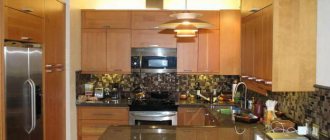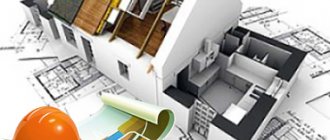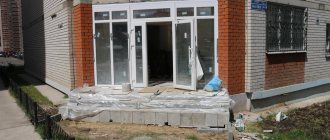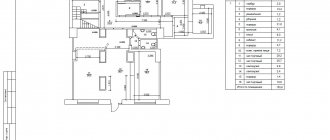Authors: Zemsky Gennady Timofeevich – leading researcher, candidate of chemical sciences, senior researcher;
Ilyichev Alexander Valerievich – deputy head of department – head of sector; Zuikov Vladimir Aleksandrovich – leading researcher, candidate of technical sciences, senior researcher; Kondratyuk Natalya Valentinovna – senior researcher; Averkina Natalya Borisovna – senior researcher (FGBU VNIIPO EMERCOM of Russia) The article was published in the journal Current Issues of Fire Safety (No. 4, 2020)
An inaccurate definition of the term gives rise to ambiguous interpretation and, as a result, distortion (wrong choice) of fire prevention measures. The authors of this article analyzed several of the most frequently used terms used in regulations and normative documents, and came to the conclusion that the definitions of many terms need adjustment, and also formulated proposals for changing the definitions of some terms and individual paragraphs of the Technical Regulations on fire safety requirements and sets of rules.
Premises
A room is a part of the volume of a building or structure that has a specific purpose and is limited by building structures [Article 2, Clause 14 384-FZ]. This definition includes not only rooms, but also corridors, halls, vestibules, shafts and other parts of the building volume. There is another definition of room:
1) room, zone (space): Space inside a building that has a specific functional purpose and is limited by building structures or conventional boundaries [clause 4.1.1 GOST R 58033-2017]. Here the words “or by conventional boundaries” cause confusion, since it is possible to highlight a room even with drawn boundaries, or screens, or partitions that do not reach the ceiling.
The words “specific functional purpose” for a room should be specified: intended to accommodate people, household utensils (furniture), production and technical equipment. The same must be done in the definitions of other spaces of the building (corridors, halls, vestibules, shafts, etc.).
Then the definitions of terms will look so that there will be no possibility of confusing terms. Namely:
2) Premises - part of the volume of a building, limited by building structures and intended to accommodate people, household utensils, furniture, production and technical equipment or storage of substances and materials.
Definition of the term “corridor”: A corridor is a horizontal extended communication room connecting individual rooms or parts of a building. [Construction terminological dictionary in 12 languages] Corridor is a room that is a means of communication with other premises (rooms) [p. 4.4.3 GOST R 58033-2017].
According to the above, the corridor is a room. This definition introduces confusion into the terminology; it does not reflect the difference between a corridor and a room, but, on the contrary, brings the concepts of room and corridor closer together, since any room can be declared a corridor and not be subject to the requirements inherent to the room (for example, not categorized by fire hazard). The corridor is, of course, part of the volume of a building or structure, but it is primarily an escape route from the premises connected by this corridor. Therefore, the requirements for it are not as a room, but as an escape route (width appropriate for the number of people, length restrictions, etc.). From the above, the following definition of the term “corridor” arises: part of the volume of a building (structure) connecting rooms on the floor and serving as a route for evacuating people from these rooms.
Similarly, when defining the terms hall, vestibule, etc., the word “room” should be excluded, and the expression “part of the volume of a building (structure)” should be used and further list the distinctive features that do not allow different terms to be confused. Then the definitions will take the following form:
Hall is a part of the volume of a building (structure), limited by building structures and intended for relaxation and waiting (there are hall vestibules, elevator halls, and reception halls).
The lobby is a part of the volume of a building (structure), limited by building structures and intended to receive and distribute the flow of visitors.
Tambour is a part of the volume of a building (structure), limited by building structures, located between the doors and intended to protect adjacent volumes of the building from environmental influences.
A passage is a part of the room area limited by building structures, equipment and furniture and intended for movement around the room.
Shaft is a vertical or inclined part of the volume of a building (structure), limited by building structures, extending across several floors and intended for placement of equipment (elevators, cables, pipelines, etc.) or air exchange.
Sometimes a room is called a cell: for example, a ventilation chamber, which is not always justified, since by definition a cell is a closed space for a special purpose: a prison cell, a caisson, a cellar, a luggage compartment, a refrigerator, etc. [Russian language dictionary in 4- x t. / RAS linguistic researchers, 3rd ed., erased. M.: Rus. Language; Polygraph resources, 1999.].
Small house according to Neufert
Small one-apartment house “according to Neufert”:
- must consist of rooms with dimensions of the minimum acceptable dimensions;
- the furniture in them is arranged as rationally as possible;
- zones with different functionality are combined in one room. The kitchen can be combined with a dining room, or a niche for cooking can be provided in the living room, etc.;
- A small number of spacious rooms and a small hall are better than many small “cages”.
With this approach, one-story houses are preferable (you won’t have to waste the house’s space on stairs). If the house is still two-story or with an attic, the staircase in it always occupies a minimum area and is located with maximum benefit - for example, a stairwell can be a barrier to the cold tending to penetrate into the rooms.
mikki1FORUMHOUSE Member
Where did the construction recommendations come from for the width of the stairs in a private house to be at least 90 cm? We take the book “The Overseas Enemy” by Neufert: passages between walls with hand luggage. With a small amount of luggage, the minimum distance is 800 or 875. That's where 90 cm comes from. In a private house, a staircase width of 80 cm is allowed, although it is clear that this is not so convenient. Therefore, if the dimensions allow, then it is better to make a staircase with a width of 120 cm, or even 135 cm. With limited dimensions, no less than 90 cm. This, by the way, is the width without fencing.
The architect emphasizes that although a square house is more economical than a rectangular one, a rectangular one may turn out to be more convenient (very often on narrow plots).
Rooms with wet processes
Among firefighting terms, the term “rooms with wet processes” is found [SP 5.13130.2009]. Premises with wet processes are exempt from protection by automatic fire extinguishing and fire alarm systems. However, a definition of this term is not given, which creates confusion and an unjustified underestimation of the degree of protection of such premises from fire. There are also no quantitative characteristics of indoor air humidity. As an example of rooms with wet processes, SP 5.13130.2009 provides showers, lavatories, refrigerated chambers, and washing rooms. Here there is a clear substitution of the concept of “room” with the concept of “process”. A bathroom is a room and there is no process in it. Due to the presence of a small open water surface in the bathroom, a slight increase in air humidity is possible. How can increased air humidity affect the need to equip a room with fire automatics? Maybe increased air humidity in the room eliminates the possibility of fire and stops the combustion process? Recognizing a slight increase in the ignition energy of combustible materials in an atmosphere with high humidity, one cannot conclude that there is any noticeable decrease in the rate of combustion of materials; rather, on the contrary, some materials in a humid atmosphere burn at a higher rate [Kumagai S. Combustion. Per. from Japanese. M.: Chemistry, 1980. 256 p.].
Is the expression “wet processes” even legitimate? In chemical technology there is the concept of “dry processes” - these are technological processes without the participation of a liquid phase of the “gas-gas”, “gas-solid” type [Chemist’s Handbook 21]. In contrast, processes involving the liquid phase can be called “wet processes.” But in this case we are not talking about them. The expression “rooms with wet processes” clearly has no meaning.
It remains to be assumed that the ban on the arrangement of premises “with wet processes” is associated with the corrosive activity of the humid atmosphere on the elements of fire automatics. Indeed, according to GOST R 53325-2012, clause 4.2.2.3, the fire detector must remain operational during and after exposure to increased relative air humidity of 93% at a temperature of 40 o C. This air humidity corresponds to the concept of “wet room mode” according to SP 50.13330 .2012. If we accept this condition, then instead of the expression “rooms with wet processes” we should write “rooms with a relative air humidity of more than 93% at 40 o C”, and appropriate changes should be made to the text of SP 5.13130.
Position of the tax authority
The area of the sales floor is determined on the basis of inventory and title documents (Article 346.27 of the Tax Code of the Russian Federation). In this case, the title document states that the disputed premises are a basement, and the explication of the building plan does not include retail spaces. Thus, the premises rented by an entrepreneur do not correspond to the concept of a stationary retail chain with sales floors. Consequently, the entrepreneur did not have the right to apply UTII in relation to such activities.
According to the inspectors, the registration certificate for the disputed premises, which the taxpayer presented as a supporting document, is not an inventory document, since it was received after the start of the on-site inspection.
Thus, the inspectors concluded that the premises used by the entrepreneur are not a store; they are not provided with retail, utility, administrative and amenity premises, as well as premises for receiving, storing goods and preparing them for sale; they are not intended for the sale of goods, but This means that commercial activities carried out by an entrepreneur are not subject to UTII.
Mezzanine
Mezzanines are built in some premises, but there is no clear definition of the term “mezzanine”. In SP 4.13130.2013 and the textbook “Architecture” by T.G. Maklakova. the following definition is given: “An area inside a building on which premises for various purposes are located (industrial, administrative and household, or for engineering equipment).” Here the term is not fully defined; it is not clear which platform is meant. A clearer and more accurate definition is the following: a mezzanine is a platform in the volume of a double-height room or an internal platform of an apartment located within a floor with an increased height, having an area of no more than 40% of the area of the room in which it is being built [SP 54.13330.2016].
SP 118.13330.2012 also has the following definition: An area in the volume of a two-story room, open to this room, or located within a floor with an increased height, measuring less than 40% of the area of the room in which it is located.
In this definition, the words “open to or located within a floor” make the term difficult to understand.
The mezzanine can be either open in the form of a balcony or closed, on which isolated rooms are located, but in both cases the mezzanine is located within a floor with an increased height and its area should not exceed 40% of the area of the room. If the mezzanine area exceeds 40% of the room area, the mezzanine becomes a floor.
Definition of concepts among such objects
Free status
A non-residential property can be given the status of a free-use premises, which allows it to be used in various fields of activity. Such an object can be repurposed at any convenient time if necessary, which significantly saves the owner’s time and money. Most often, vacant premises are intended for rent, and therefore a change in purpose occurs much more often than usual. They are used for offices, hairdressers, shops.
Free-use premises, contrary to their status, cannot be used for all areas of activity . In some situations, additional permits will be required.
Reference. The cost of free-use objects is significantly higher than similar options indicating a specific purpose.
Residential status
A change in the purpose of using a room in a building is not a reason for reconstructing the building itself. This is where the concept of non-residential premises with a residential purpose arose. Consequently, the building may be non-residential, but the premises located in it are suitable for habitation.
Thus, the main task of the owner is to go through the procedure for making adjustments in a timely manner, which we will discuss further.
Functional purpose
In Art. 27 of Federal Law No. 123-FZ there is a phrase: “According to fire danger, industrial and warehouse premises, regardless of their functional purpose, are divided into the following categories...”. It seems that the terms “purpose” and “functional purpose” are two independent concepts. The meaning of this phrase is unclear. Either these terms should be defined and their differences explained, or the words “regardless of their functional purpose” should be deleted from the text.
The legislation of the Russian Federation does not provide precise definitions of the terms “purpose of premises” and “functional purpose of premises”.
Based on an analysis of judicial practice and a systematic analysis of legislative norms (see, for example, the ruling of the Vladimir Regional Court dated January 11, 2011 in case No. 33-3918/10), the following conclusions can be drawn: the intended purpose (or simply purpose or intended use) should be understood type of activity for which the premises are intended: trade, production, warehousing, utilities, catering, offices, medicine, education, sports, free use, etc.
Functional purpose means the presence of technical characteristics and design features of the premises that allow it to be used as an independent object: main, auxiliary, service, communication, technical.
Since from the point of view of the spread of fire it does not matter what functional purpose the room has (main or auxiliary or otherwise), it is inappropriate to use the term “functional purpose” in fire safety documentation. It is more clear and correct to use the term “intended purpose” or “intended use”. Therefore, paragraph 1 of Art. 27 of the Housing Code of the Russian Federation, it is advisable to state in the wording: “according to explosion and fire hazards, premises of functional fire hazard class F5 are divided into the following categories...”.
Adjacent rooms
The term “adjacent premises” would seem to raise no questions.
Adjacent premises are premises separated by common enclosing structures and (or) interfloor ceilings [123-FZ].
However, in the Terminological Dictionary of Construction in 12 languages (VNIIIS Gosstroy USSR. M.: Russian language. 1186 p.) we read: “Adjacent rooms are rooms that have a common entrance (exit) and allow the possibility of penetration from one room to another.” . Here the term “adjacent” is unreasonably replaced with “passing”. In addition, rooms separated by a floor-ceiling are considered adjacent. These are vertically adjacent rooms, as opposed to horizontally adjacent ones, located on the same floor. Therefore, it is more correct to define the term “adjacent premises” as follows: adjacent premises are premises separated by common enclosing structures and (or) interfloor ceilings.” And this should be reflected in the regulatory and technical documentation on fire safety.
Composition of the premises of a private house according to SNiP
The minimum composition of the premises of a one-apartment house is regulated by the current SNiP 02/31/2001 “Single-apartment residential houses”. According to this document, a private house must have at least the following premises:
- living room (or living rooms;
- kitchen (or kitchen-niche, or kitchen-dining room;
- front (hallway, hall);
- bathroom or shower;
- restroom;
- pantry (or built-in wardrobes);
- boiler room (in the document it is written as follows: “in the absence of centralized heating supply, a room for a heating unit.”
Everything else - what rooms will be in the house, how they will be connected to each other - is determined by the developer, based on the composition of the family, lifestyle, needs and wants.
Nastena74FORUMHOUSE participant
We are already building a second house. The operation of the first house showed that the guest room was used at best 2-3 times a year, but there was a catastrophic lack of storage space in the entrance, kitchen and laundry room. And it is also very desirable to have a vestibule; in summer, shoes can be taken off there and the house is cleaner, and in winter, the vestibule protects from the cold. And a pantry in the kitchen will save money on furniture (fewer cabinets are needed), and a food processor, large pots and a supply of food are perfectly located there!
SNiP establishes the following requirements for the minimum area of premises:
| Premises of a private house | Minimum room area (m2). |
| Shared living room | 12 |
| Bedroom | 8 |
| Bedroom in the attic | 7 |
| Kitchen | 6 |
Technical buildings
Among the rooms located in buildings for various purposes, one can distinguish rooms in which flammable substances and materials do not participate in the technological process and are not stored, but perform auxiliary functions. Such premises are called technical premises. This term appears, for example, in clause 4.3; 5.1.2; clause 5.6.4 SP 4.13130.2013, and they are mentioned on a par with production and storage premises, which gives grounds to consider them to belong to the functional fire hazard class F5.
According to the definition of the Terminological Dictionary of Construction in 12 languages (VNIIIS Gosstroy USSR. M.: Russian language): Technical premises - an auxiliary room intended to accommodate the engineering equipment of a building.
According to SP 4.13130.2013, technical premises include: workshops, laboratories, storerooms and electrical rooms, parking lots, heating units, boiler rooms, library book depositories, server rooms, electrical switchboards, ventilation chambers, switchboards, radio centers, elevator engine rooms, refrigeration units, laundries, ironing, compressor and water meter units.
Are technical premises a separate group of premises included in production premises, that is, do they belong to the functional fire hazard class F5 or to other classes?
The answer to this question is decisive in determining the need to categorize them according to explosion and fire hazard.
Looking at the list of technical premises, you will notice that some technical premises are mentioned both as production and storage premises. For example, storerooms, parking lots, library book depositories are also mentioned in the list of warehouse premises, and workshops, laboratories, elevator machine rooms, refrigeration units, laundries, ironing rooms, compressor rooms are mentioned in the list of industrial premises [Categorization of technical premises//Fire safety. 2021. No. 3. P. 89–92]. That is, there is no clearly defined boundary between production, warehouse and technical premises. All of them are production to one degree or another and this must be recognized at the legislative level.
At the same time, clause 23, b of the Fire Safety Rules prohibits the use of attics, technical floors, ventilation chambers and other technical premises for organizing production areas, workshops, as well as for storing products, equipment, furniture and other items.
Thus, despite the fact that technical premises should be classified as functional fire hazard class F5, they should be located separately from production and storage premises.
Open fire and hot work
In the text of the Fire Safety Rules, the words “open fire” and “hot work” are repeatedly used, but definitions of these terms are absent not only in this document, but also in other documents on fire safety.
The lack of a definition of the term leads to the fact that the same fire safety requirements apply to completely different types of open fire, for example, a stove and a candle. The press secretary of the Ministry of Emergency Situations of the Republic of Belarus believes that “open fire means the source of fire that we hold in our hands: a lighter, a match, a candle. A candle in a candlestick is not an open fire, like fire in other special devices: fireplaces, stoves, any cooking devices provided for by the project. He believes that if you take a candle and walk around a restaurant with it, it will be an open fire, but a candle firmly installed in a candlestick or cake is not an open fire [Kumagai S. Burning. Per. from Japanese. M.: Chemistry, 1980].
The types of open fire are numerous and varied, so it would be wrong to impose the same fire safety requirements on all types.
Before formulating requirements, it is necessary to divide open fire into groups. It seems that such groups could be:
1) a fully open fire - this is the flame of a match, candle, torch, fire; 2) semi-open fire is a fire in a hearth with an open door or open top without a chimney. This includes braziers, barbecues, metal barrels for burning household waste; 3) a closed fire is a fire in a working stove with closing doors and a chimney; incinerator, crematorium. However, in this case, the combustion air comes from the surrounding space; 4) a completely closed fire is a fire in a heat generator with a closed combustion chamber that does not have air exchange with the heated room. Such a fire is protected not only from escaping from the stove into the room, but also from the penetration of flammable gas or vapors into the heat generator
Basis of dispute
The inspectorate conducted an on-site tax audit of the entrepreneur.
Based on the results of this inspection, the inspectors drew up an act on holding the entrepreneur accountable for committing a tax offense and assessed additional single tax according to the simplified tax system, penalties and a fine in a total amount of more than 500,000 rubles. The basis for this decision was the conclusion that the entrepreneur did not have the right to apply the special UTII regime, since the rented premises where he carried out wholesale and retail sales of goods do not belong to retail trade facilities.
The entrepreneur appealed the inspection's decision to the arbitration court.
Fire load
When categorizing industrial, agricultural and warehouse premises, the concept of “fire load” is used. This is the amount of heat that can be released in total during a fire.
GOST R 54081-2010 gives the following definition of the total fire load: “total fire load: the total amount of thermal energy that can be released during a fire as a result of the complete combustion of combustible (combustible and low-combustible) materials in the room (volume), including wall cladding, partitions, floors and ceilings.
According to this definition, building materials not located in the volume of the room are not included in the total fire load. In the now inactive standard ST SEV 446-77, the fire load was divided into permanent and temporary.
The constant fire load includes substances and materials in building structures that can burn. Temporary fire load includes substances and materials circulating in production, including insulation, materials located in consumable warehouses, furniture and other materials that can burn.
It can be assumed that the temporary fire load (TFL) according to ST SEV 446-77 is identical to the total fire load according to GOST R 54081-2010. It consists of technological equipment with contents, furniture, appliances and finishing materials for walls, ceilings and floors, and also includes electrical and insulating materials. VPN is used to determine the category of premises. However, the question of including such elements as cable products and finishing materials of walls, floors and ceilings in the temporary fire load is not generally accepted.
You should also decide on the question: whether to take into account cable electrical insulation when categorizing premises if the cables are placed in metal pipes or boxes made of non-combustible materials.
There is another unresolved issue when determining the fire load. It is as follows. It is known that low-flammability materials can burn only with constant exposure to an ignition source. If there are both flammable and slow-burning materials in the room at the same time, all materials will burn in the resulting fire. But in the absence of flammable materials (only slow-burning ones are present), a fire in the absence of a constantly operating ignition source is impossible. This scenario is not considered in SP 12.13130.2013.
The next issue that causes controversy is the calculation of the specific fire load. According to the definition given in SP 12.13130.2009, the specific fire load is calculated by dividing the temporary fire load by the area where it is located. At the same time, it is not specified what “accommodation area” is. When shelving multi-level storage of materials, the fire load is placed on shelves, the total area of which is equal to the area of one shelf multiplied by the number of shelves. At the same time, there is another definition of the specific fire load according to GOST R 54081-2010, where the area where the fire load is placed is defined as its linear projection onto the floor within the fire area. Which of these values is more correct? Let's look at two examples: in one case, the materials are on a rack with several shelves, in the second case, the same materials are on a pallet. The area of the pallet is equal to the area of the rack, the height of the material on the pallet is equal to the height of the material on the rack. Specific fire loads must be the same. And for them to be the same, it is necessary that the area where the fire load is placed on the rack should be taken equal to the area of one shelf, that is, the area of the projection of the rack onto the floor. Thus, an amendment must be made to the text of SP 12.13130.2009.
SP 12.13130.2009 also contains the term “fire load area”, but the definition of the term is not given. The division of the fire load into different areas is that if there is a fire in one part of the room, it should not spread to the adjacent area with flammable substances located there.
Then, naturally, the question arises of what is a “site” and what is not. Based on the data in Table B2 SP 12.13130.2009, placing a flammable load at a distance of less than 2.8 m from each other allows us to consider that it is located in one area. If the fire load is dispersed over 2.8 m, multiple areas should be considered.
Classification by type of permitted use
Non-residential premises can be used for any activity. If we take into account all types of permitted use, then all premises are divided into the following types:
- Office.
It is used to create an organization’s office, and can be located in shopping malls, shopping centers and business centers. It may also take place in a large office building. The office space has characteristic solid walls that separate it from other spaces. It is mandatory to have communications directly in the building (water, bathroom, drain). - Trade area.
It can be used for trade, and placed in a shopping center or in a residential building. It does not always have solid walls, but the presence of basic communications not far from such an area is mandatory. They can be designed for a small number of trading platforms. - Multi-purpose room.
It is suitable for different types of activities (office, medical services office, sports club, solarium, manicurist’s office, sugaring specialist’s workplace). The room is separate, it has a separate entrance and solid walls that separate it from other rooms. It must also have its own communications, and it can be located in a shopping center or residential building. - Stock.
It may take place in an office building or in a sports facility. It is characterized by solid walls that separate it from other rooms. The presence of a separate entrance and basic communications is not necessary, because it is often used to store products or equipment.
Stairs and stairwells
The Housing Code of the Russian Federation uses an abbreviation to designate the types of stairs and staircases. Deviation from the rules for the formation of abbreviations has led to confusion and misinterpretation of the terms “staircase” and “staircase”.
According to the reference book “Rules of Russian spelling and punctuation. Rules for writing abbreviations and graphic abbreviations, ed. V.V. Lopatina” abbreviation is a word formed by an abbreviation of a word or combination of words and read by the alphabetical name of the initial letters or by the initial sounds of the words included in it.
Following this rule, the abbreviation of the word “staircase” is L, the abbreviation of the words “staircase” is LK. Therefore, the staircase of the first type should have the abbreviation L1 (now it is a staircase with natural light through glazed or open openings in the external walls on each floor); staircase of the second type - L2 (now these are staircases with natural light through glazed or open openings in the roof), staircase of the third type - L3. An ordinary staircase should be marked - LK, smoke-free staircase - LKN, smoke-free staircase with an entrance to the staircase from the floor through a smoke-free external air zone along open passages - LKN1, smoke-free staircase with air pressure to the staircase in case of fire - LKN2, not smoky a staircase with an entrance to it on each floor through a vestibule-gateway, in which air pressure is constantly provided or during a fire - LKN3.







